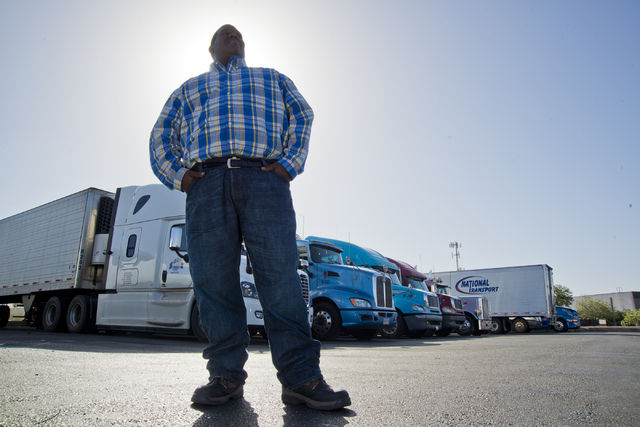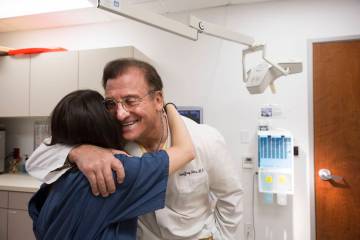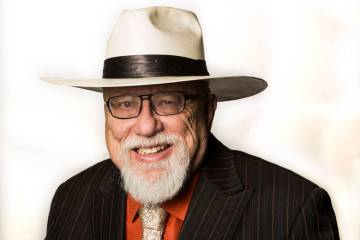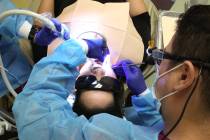If technology throws millions of truckers out of work, is that a good thing?
Fabian Coleman’s big dream finally gets on the road this week. For about eight years he and his wife, Nina, have pinched pennies to make it come true.
“No Red Lobster or Olive Garden meals,” the 36-year-old father of three and aspiring trucker says with a laugh. “There’s been a lot of Ramen noodles and bologna sandwiches for us.”
This weekend Coleman starts driving temperature-sensitive freight in Nevada and around the West Coast for a national carrier. He believes the experience will provide some of the road training he needs to build a great driving reputation and, eventually, the ability to call his shots in negotiating rates for his work.
But no job is immune from the disruption of technology. If Coleman’s new career takes off, he’ll soon face competition from the trucks themselves — driverless ones.
In recent months, one publication after another has reported that within the next two decades, the takeover of trucking by the machines will be underway. When The Wall Street Journal addressed the topic, the headline read: “Daddy, What Was a Truck Driver?”
Autonomous trucks, according to the American Trucking Association, are practically inescapable. Though test drives of autonomous cars have received most of the ink, what transportation consultants are most excited about is the ability to cut tens of billions of dollars in freight labor costs through driverless trucking. About 6 million Americans are licensed professional drivers.
Coleman is concerned but undeterred. Within two years he plans to own and operate a fuel-hauling truck — and have an income of more than $100,000 a year.
“You have to plan to make dreams come true,” said Coleman, who worked in security and shelled out around $5,200 for the training that prepared him to drive an 18-wheeler. “I know I’ll have to work hard. Most truckers don’t make six figures, but it’s possible.”
Because Coleman and his wife have saved carefully, Coleman plans to put $40,000 down on a $120,000 truck in a year, with payments taking care of the rest.
In his first year alone, he’ll be away from his Nevada home three weeks a month, sleeping in a company-owned truck. It’s a sacrifice he’s willing to make to give his children a better education and a better future.
He understands that driverless trucks could help companies make more money and reduce consumer costs, but he wonders who’s looking out for the drivers. He knows robots decimated jobs in the auto industry.
As it stands now, truck driving is one of the last jobs in the country that provides a middle-class income — around $40,000 per year —without requiring a post-secondary degree.
“Are we just going to throw millions of drivers out of work without having anything else for them?” he asked as he stood outside a truck stop in North Las Vegas.
His question is a good one.
In January, Gov. Brian Sandoval, who wants Nevada to become the nation’s leader in the testing and development of vehicles that drive themselves, announced that a center for autonomous vehicles would be created within his economic development office.
Driverless trucks, which already are being used successfully in Europe and Australia, initially will have a human aboard in case of difficulties. But auto industry consultant Carlisle &Co. has predicted that, eventually, seven trucks could follow just one with a human driver.
When blue collar jobs have been lost in the past because of bad trade deals, low-wage outsourcing or technology — according to the Economic Policy Institute, 5 million manufacturing jobs were lost between January 2000 and December 2014 — those whose jobs have disappeared have had to fend for themselves.
Educational opportunities and social safety nets largely haven’t been there to help people transition to new, well-paying jobs.
Bankruptcies and home foreclosures became commonplace. So did divorces as couples struggled to make ends meet. Children, watching parents fight desperately to stretch a dollar, became emotional wrecks themselves.
“There still has to be good jobs for the working man,” Coleman said. “All we want to do is work hard and get paid for it.”
Paul Harasim’s column runs Sunday, Tuesday and Friday in the Nevada section and Thursday in the Life section. Contact him at pharasim@reviewjournal.com or 702-387-5273. Follow @paulharasim on Twitter.






















